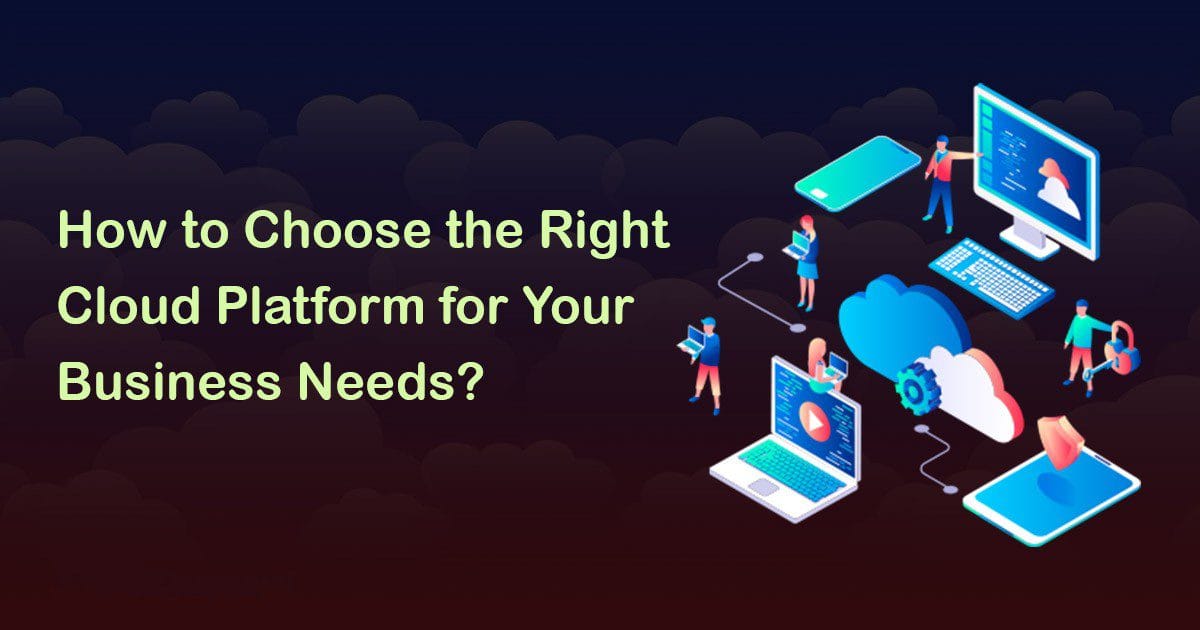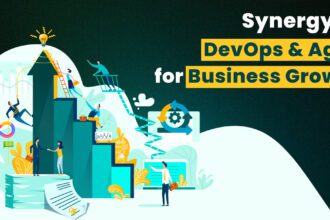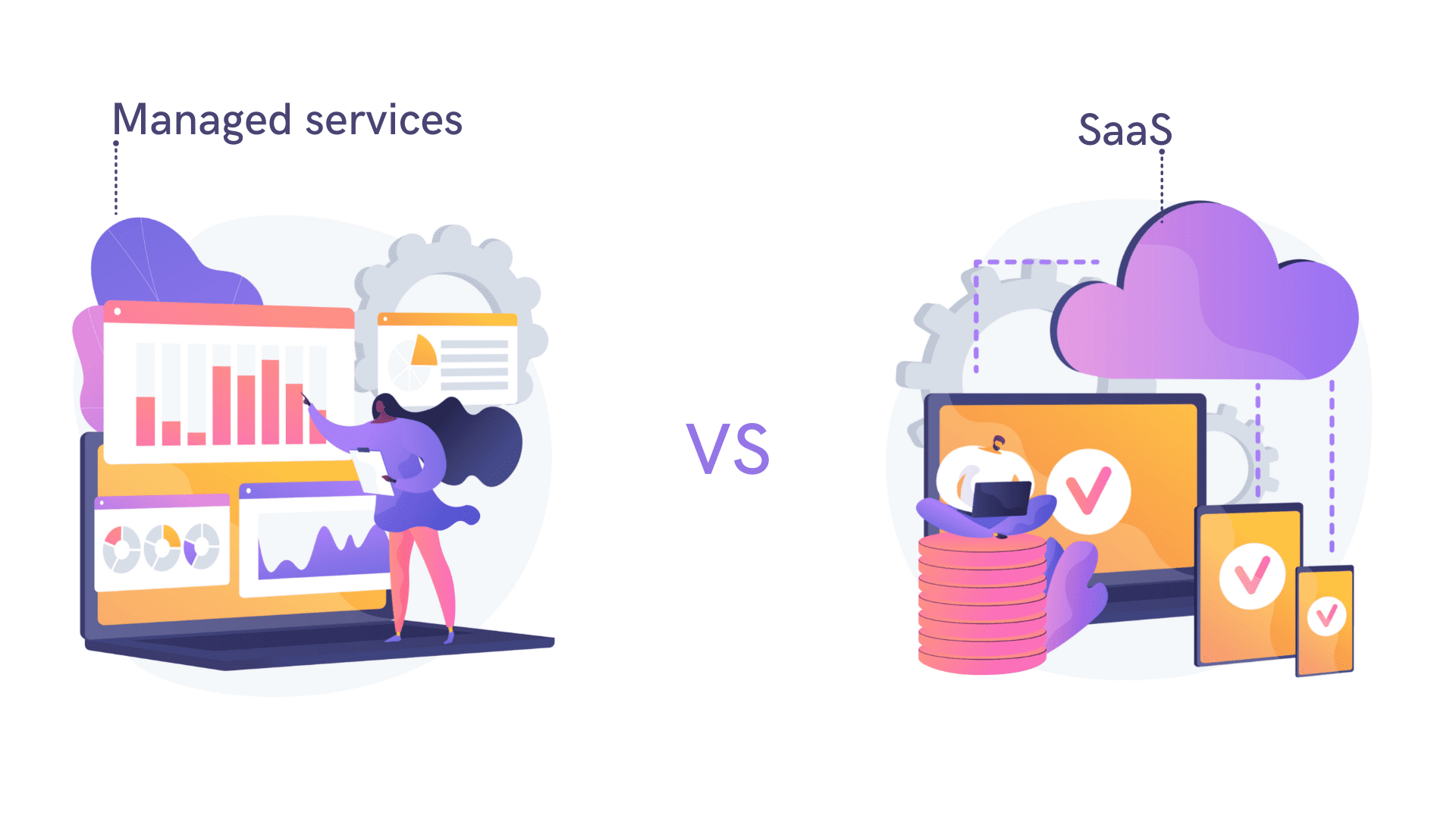
Choosing a cloud platform is not something you outsource to a checklist. It shapes your performance, your flexibility, and how quickly you move when the market shifts. If you treat it like a technical detail, you lock yourself into slowdowns you will not see until it is too late. Cloud computing solutions can guide you toward smarter, future-ready decisions rather than rushed compromises.
The right platform does not start with features. It starts with purpose. Your purpose.
You need to get this choice right because reversing it later will cost time, money, and focus you cannot afford to waste.
Know What You Are Solving?
You do not start by asking which provider is cheaper or faster. You start by asking what your business needs from the cloud. Modern cloud computing architecture supports businesses with different goals, from speed to scalability to security, each requiring careful alignment with needs.
You need to be clear on the problem before looking at a solution.
Are you trying to:
- Move away from unreliable on-site servers?
- Scale up your products without doubling your costs?
- Make remote access safe and fast?
- Speed up product launches?
- Cut disaster recovery times?
You pick a platform based on your problem, not on what someone else thinks is popular. If you cannot tie your cloud move to a specific outcome, you are gambling with your future.
Understand What You Are Buying
Cloud is not a vague concept. It is infrastructure you rent, services you use, and risks you take on.
You have three basic choices:
- IaaS (Infrastructure as a Service): You rent machines and storage. You control operating systems, networks, and applications. You get flexibility but carry more responsibility.
- PaaS (Platform as a Service): You build and run your applications on someone else’s managed systems. You control the apps; they control the rest.
- SaaS (Software as a Service): You use ready-made applications. You manage settings and users. You do not manage the environment. Cloud computing applications today are increasingly delivered via SaaS models, offering businesses ready-to-use tools with minimal maintenance overhead.
Pick the one that matches your technical ability and your appetite for ownership:
- If you want maximum control, you use IaaS.
- If you want speed and simplicity, you use SaaS.
- If you want to build custom application development services without managing servers, you use PaaS.
You do not pick based on what sounds modern. You pick based on what lets you move faster without giving up what matters.
Focus on What Will Break First
You are not choosing a cloud platform for a best-case scenario. You are choosing for when things go wrong.
You need to know:
- How fast can you recover from outages?
- How data is secured at rest and in transit
- How identity and access are managed
- How support responds when you need them, not when they feel like it
- How does cost behave when your traffic spikes or your team grows
Cloud computing services offer critical support features like disaster recovery, real-time monitoring, and scalable security that you must evaluate thoroughly.
Any platform looks good during a demo. You need the one that stays good when pressure hits.
If a provider cannot give you hard answers on resilience, security, and cost control, you move on.
Match the Workload, Not the Brand
You do not pick a platform because it is a big name. You pick it because it fits your workloads.
If you are heavy on analytics and machine learning, you are looking at different tools than if you are running a traditional web app.
Cloud computing gives businesses the flexibility to choose from a broad range of configurations, but matching the tool to the task is still critical.
Think workload first:
- High-transaction systems need low-latency networks and robust failover.
- Massive data workloads need strong storage tiers and query performance.
- Mobile-first applications need global edge delivery and fast scaling.
Different providers are built for different priorities. You do not bend your system to fit the provider. You pick the provider that fits your system.
Do Not Ignore Vendor Lock-In
Lock-in does not happen on day one. It happens slowly, as you start using proprietary services because they seem convenient.
It happens when you use provider-specific APIs, when you store data in formats nobody else uses, and when you depend on configurations that cannot be exported cleanly.
Many businesses combat lock-in by favouring cloud computing software built on open-source principles and multi-cloud capabilities.
You stay free by:
- Building on open standards when you can
- Keeping control of your data encryption keys
- Using containers for portability
- Avoiding platform-specific services unless they deliver massive value
Lock-in is not always bad. But it needs to be a conscious trade-off, not something you realise when it is already too late to leave.
Test Everything Before You Trust It
Sales pitches are not system performance, and demos are not production workloads.
You test the platform by running small real-world pilots:
- Deploy a live application
- Move a real dataset
- Stress-test performance limits
- Test failover processes
- Track billing accuracy
Leveraging cloud computing SaaS offerings during pilot projects helps you experience real-world performance without a heavy upfront investment.
You do not trust what is in the brochure. You trust what works when you hit it with actual traffic, actual users, and actual problems.
If a platform cannot handle the pressure of small-scale reality, it will collapse when you scale up for real growth.
Budget for Reality, Not Hopes
Cloud pricing models look simple when you read marketing materials. They get complex fast once you start running real workloads.
You must budget for:
- Data transfer fees, which often cost more than storage
- API call charges, especially if you are building heavily interactive apps
- Licensing fees tied to specific software packages
- Support plan upgrades you will need when things break
- Long-term storage costs as your data volumes grow
You must model the cost of ordinary operations and failure scenarios. You must understand how expenses will grow with traffic, with customer acquisition, and with international expansion.
If you budget based on best-case assumptions, you will be paying penalties and scrambling for cash when real growth arrives.
Plan for Scale from the Beginning
You may be a small team now and may only have one product or one region. That will not stay true if you are serious about growth.
Your platform must support:
- Fast user growth
- Multi-region deployment
- Increasing database loads
- Heavy API traffic
It must scale up without painful migrations, manual rework, or expensive architecture overhauls.
If your cloud platform only fits your current size, it is the wrong platform.
You need one that grows ahead of you, not behind you.
Look at Support Like Your Business Depends on It
Support is not a checkbox. It is your lifeline when systems fail.
You must know:
- How quickly can you reach real human support?
- How fast do they respond to critical issues?
- Do they escalate issues based on your contract, not their convenience?
- Do they assign account managers for strategic guidance?
You must also read their public incident reports carefully. See how often they fail. See how transparent they are when things break.
Support quality will matter more than almost anything else when downtime hits during a product launch, a holiday sale, or a regulatory audit.
Pay Attention to Security from Day One
You cannot bolt security onto a platform after you are live.
You must build on a platform that:
- Offers strong identity management
- Encrypts data at rest and in transit
- Supports audit logging and access reviews
- Offers compliance with standards like GDPR, HIPAA, PCI DSS, or others that you need
Security is your responsibility, even when you use a third-party platform. But the right cloud provider gives you the tools to do it right without constant friction.
If the platform makes it hard to secure users, devices, and data, it is a liability you cannot afford.
Think About Compliance Before You Have To
Compliance is not only for banks and hospitals anymore.
You may need:
- Data residency guarantees
- Audit trails for financial or healthcare data
- User access tracking for sensitive records
- Encryption key management inside your jurisdiction
If you choose a platform that cannot support your compliance obligations, you will either pay for expensive workarounds later or face fines and legal exposure.
You must ask compliance questions now, not after you have already built on the wrong foundations.
Make Simplicity Your Default
Complexity does not impress anyone. It breaks faster, costs more, and becomes harder to manage with every growth cycle.
You need to pick a platform that makes simplicity normal, not rare.
Look for:
- Clean integration with your existing tools
- Straightforward networking setups
- Logical user management
- Easy automation without endless custom scripts
Every extra moving part increases the number of things that can go wrong. Every extra dependency locks you deeper into a structure you cannot easily change.
Simple systems scale better, recover faster, and cost less to support over time.
If a cloud provider pushes complexity early, that is a warning. If their architecture diagrams look beautiful but make no operational sense, you are looking at future problems.
Know Where the Provider Is Investing
Cloud platforms are not static. They grow, expand, and shift priorities based on market trends, customer needs, and internal strategy.
You must understand:
- What services are getting active development
- Which regions are expanding with new data centres
- What industries are they targeting for new features?
- How often do they update and improve their core infrastructure?
If you build your systems on a part of a platform that the provider is barely maintaining, you will be stuck with slower performance, fewer features, and limited support.
You want to build on parts of the cloud where the provider is actively investing resources. That way, you stay ahead naturally, instead of having to migrate out of dead-end products later.
Use Pilot Projects to Force Reality Checks
A pilot is not just a formality. It is your chance to find out if the cloud provider’s promises hold up under pressure.
When you run a pilot, make it count:
- Move a real, critical workflow
- Simulate real production traffic
- Measure real-world performance, not lab numbers
- Push systems into failure modes and see how recovery works
- Track billing data closely and model cost projections at scale
You learn more from one honest pilot than from ten vendor meetings. Real deployments expose hidden costs, slow response times, complex configurations, and reliability gaps.
Better to find those in a low-risk pilot than after you have already committed serious time and budget.
Avoid Over-Engineering Early Systems
Cloud platforms offer an endless menu of services. Just because you can use every feature does not mean you should. You must stay disciplined.
At first, focus only on:
- Core compute and storage
- Basic monitoring
- Simple access control
- Minimal required automation
You should not adopt complex services like AI toolchains, custom networking meshes, or multi-cloud orchestration layers until you have a solid, proven workload running.
Overbuilding early costs more, delays launches, and creates systems nobody fully understands. Get basic workloads running smoothly first. Expand only when the business case demands it.
Demand Real Transparency About Failures
Every cloud provider has outages. Everyone. The difference is how they handle them. You need to read public incident reports carefully.
Look for signs of real transparency:
- Are the causes explained clearly without hiding behind vague terms?
- Are steps taken to prevent future failures?
- Are customers given real timelines and updates during major issues?
If a provider hides failures or spins incidents to sound less serious, assume they are hiding other problems too. You cannot afford a platform that treats truthfulness as optional.
Think About Data Exit Plans Now
Most cloud migrations plan for going into the cloud. Few plan to ever leave it.
You must think about data exit strategies from the beginning:
- How easily can you export full datasets?
- How cleanly can you repost applications elsewhere?
- How much downtime will moving create?
- How much will data extraction and transfer cost?
Even if you plan to stay with the same provider forever, you need an exit plan in case of pricing shocks, service changes, compliance shifts, or corporate mergers. Data mobility is not paranoia. It is basic operational hygiene.
Build for Disaster Recovery from Day One
Disasters do not wait until your system is perfect. You must have recovery plans in place before you launch live services. A good cloud platform makes disaster recovery simpler, not harder.
Look for:
- Cross-region replication
- Snapshots and versioned backups
- Quick recovery testing options
- Clear documentation for failover steps
You must not assume that redundancy happens automatically just because you are on a big-name cloud provider. Resilience is something you design deliberately, not something you hope happens by default.
Prepare for Global Scale Even if You Are Local Now
You might only have customers in one country today. But you should plan for tomorrow’s expansion.
A good cloud platform:
- Offers multiple global regions
- Supports low-latency delivery across geographies
- Manages compliance for data sovereignty in multiple countries
- Let you deploy services close to users without rebuilding architectures
Even if global expansion feels distant now, it will come faster than you expect if your business succeeds.
Choosing a platform that already operates globally means you will not have to tear everything down and rebuild when growth comes.
Integrate Automation Thoughtfully
Automation saves time and reduces human error. But bad automation locks mistakes into every deployment.
You should:
- Automate small, repetitive tasks first
- Validate each automated workflow carefully
- Document every automated process
- Include rollback and fail-safe procedures
You do not automate for the sake of complexity. You automate to protect consistency and speed. Well-designed automation means your systems behave predictably, even under stress.
Badly designed automation turns small glitches into wide outages faster than any human operator ever could.
Understand What the Provider Will Not Do for You.
Cloud providers handle infrastructure. They do not handle your architecture, your disaster recovery plans, or your security configurations beyond their baseline.
You must accept responsibility for:
- User access management
- Application-level security
- Backup schedules and testing
- Monitoring and alert configuration
- Proper network segmentation
Cloud does not absolve you of operational responsibility. It shifts the location of that responsibility.
If you ignore this, you will blame the cloud when problems arise. But the truth will be that you failed to build with ownership in mind.
Build with Agility, Not Rigidity
The cloud gives you tools to move fast. If you build rigid, brittle systems, you waste that opportunity.
Your architecture must:
- Support modular deployments
- Allow easy rollbacks
- Enable small, safe changes regularly
- Minimize cross-system dependencies
Fast businesses do not move fast because they gamble. They move fast because their systems support safe, deliberate speed.
Rigidity creates fear of change. Agility builds confidence to improve continuously.
Conclusion: Choose What Moves You Forward
The right cloud platform is not the one with the most awards or the flashiest marketing. It is the one that moves your business toward its real goals.
You must choose based on clarity, testing, and discipline. You must stay focused on control, cost, simplicity, and resilience.
Choose with precision. Build with care. Adapt with speed. That is how you use the cloud to win. Know more about cloud platforms with AllianceTek.








